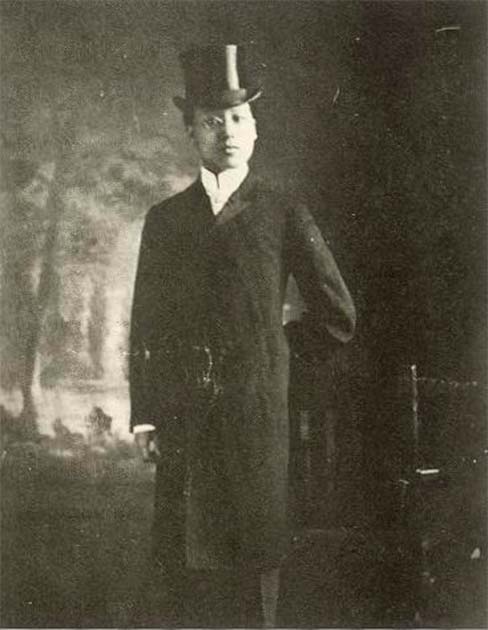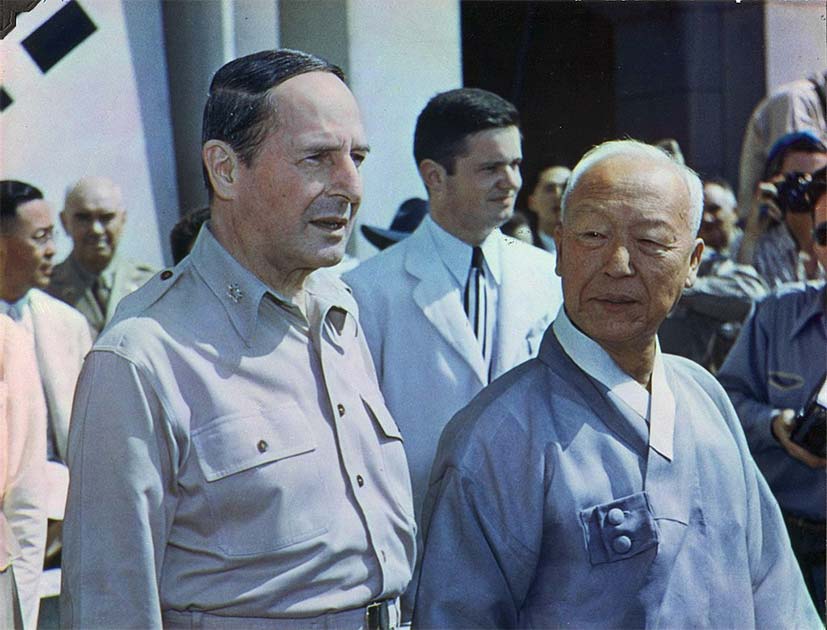Syngman Rhee, also known by his pen name Woonam, was a South Korean politician and served as the first president of South Korea from the years of 1948 until 1960. Before this, he was the first and last president of the Provisional Government of the Republic of Korea from 1919 until he was impeached in 1925.
Rhee fled to the US for almost 20 years before being returned by the US military where he took his seat as the President of the Republic of Korea. He won many an election in the 1950s but eventually lost to the opposition vice president Chang Myon. His rule did not last, but the impression he left on the country certainly did.
Born into Activism
Syngman Rhee was born in 1875 on the 26th of March in a village within Pyeongsan County called Daegyeong. Rhee had older brothers and sisters but his brothers both died in infancy.
He grew up in a home of modest means in a rural community. Rhee’s family has traced its lineage back to an old Korean king named Taejong of Joseon, a descendant of Grand Prince Yangnyeong.
At the age of 2, Rhee and his family moved to Seoul where he would grow up. He was educated traditionally in a Confucian manner. Unfortunately, when he was six, Rhee contracted smallpox which rendered him almost blind before he was treated by a Japanese doctor using Western medicine.
Rhee performed well in school and was listed as a potential candidate for the Korean civil service examination known as the gwageo. This system was abolished though in 1894 and thus he had to enroll in an American methodist school.

It is here that he converted to Christianity and studied English. In 1895, Rhee joined the group Hyeopseong (translates as the Mutual Friendship) Club which was created by the political activist Seo Jae-pil when he returned from the United States. Rhee spent much of his time earning money by teaching Korean to Americans before graduating from his school in 1895.
By the end of the First Sino-Japanese War in 1895, Rhee was involved in heavily anti-Japanese circles. He was even implicated in the plot to assassinate Empress Myeongseong, the wife of King Gojong, who had previously been assassinated by the Japanese. Rhee was helped by the American Georgiana E. Whitling in avoiding the charges as she disguised him as a patient of hers.
Rhee began as one of the forerunners of the Korean Independence Movement and used grassroots organizations like the Hyeopseong Club and the Independence Club to achieve his aims. He organized many protests against the influences of the Russian and Japanese empires and spoke harshly about the corruption he perceived throughout Korea.
In 1898, Rhee was promoted to the rank of Uigwan in the Imperial Legislature. But he did not find success there. It was not long before he was implicated in another plot though this one was to remove the King. Rhee was imprisoned in Gyeongmucheong Prison in 1899. He tried to escape but was caught and sentenced to life imprisonment in the Hanseong Prison.
Whilst in prison, Rhee compiled a record of the Sino-Japanese war, completed a new English Korean Dictionary, wrote in the imperial newspaper, and wrote a piece called The Spirit of Independence. After 6 years, Rhee was released from prison and moved to the US in 1904.
Whilst in the US, Rhee actively lobbied the US to intervene in Korea. Whilst there, he also achieved a bachelor’s degree from George Washington University and a master’s from Harvard University before his Ph.D. from Princeton University. He wrote his thesis titled ‘Neutrality as Influenced by the United States’.
Rhee spent the following years advocating for foreign support in Korea but had little success. He represented Korea at the Paris Peace Conference in 1919 and held his own Korean Congress in Philadelphia.
In March 1919, he was appointed as the prime minister of the Provisional Government of Korea. However, he was unable to act efficiently in this role and was removed from office in 1925. Throughout the next 20 years, Rhee would attempt to help Korea gain independence and would participate in international conferences such as the League of Nations in Geneva in 1933.
Return to Korea
When Japan surrendered in 1945 and Korea was declared independent, Rhee was flown to Tokyo with the US military. He was then allowed to return to Korea. It was here that he assumed the posts of President of the Independence Promotion Central Committee and the president of the Headquarters for Unification. Rhee was strongly anti-communist and was opposed to foreign intervention including from the US and the Soviet Union.
- The Sakoku Edict: Why did Japan Isolate Herself for over 200 Years?
- USS Pueblo: Why is an 80-year-old Ship in Active Service?
Rhee was able to come to power because he had been living in the US for decades and had avoided much of the factionalism of the Independence movement. Additionally, he was fluent in English and had favor from the American occupation government.
When the UN recognized Korea’s independence in November 1947, Rhee was elected without competition to become Speaker of the Assembly. In 1948, he was elected president with 92.7% of the vote.

However, when Rhee took office, he enacted laws quickly and severely that limited political dissent. Many claims that he had his opponents arrested and executed.
He became looked upon as a dictator. Rhee’s government oversaw many massacres, including the suppression of the Jeju Uprising which brought 14,373 victims. By 1950 Rhee had 30,000 suspected enemies in his jails.
Worse than this, Rhee then had to compete in the Korean War in which North Korea was able to occupy Seoul. Despite there being no clear victor, an armistice was agreed upon, and Rhee was re-elected with 74% of the vote.
South Korea struggled to recover from the war and was reliant on US aid, but Rhee managed to get re-elected in 1956 for his third term which was against constitutional law. To the outside world, it seemed that Rhee had no competition, and that South Korea would not countenance another leader.
In 1960, Rhee won again as his opposition died before the election, but this time he was forced to resign when student demonstrations claimed he rigged the election and led to shootings. His unbeaten, and largely uncontested run as leader was finally over, and it was the youth of the country who had overthrown him.
Top Image: Syngman Rhee’s political opponents are executed in 1950; Rhee himself would be dubbed Time Magazine’s “Man of the Year” three years later. Source: US Army / Public Domain; Boris Chaliapin – Time Magazine / Public Domain.
By Kurt Readman